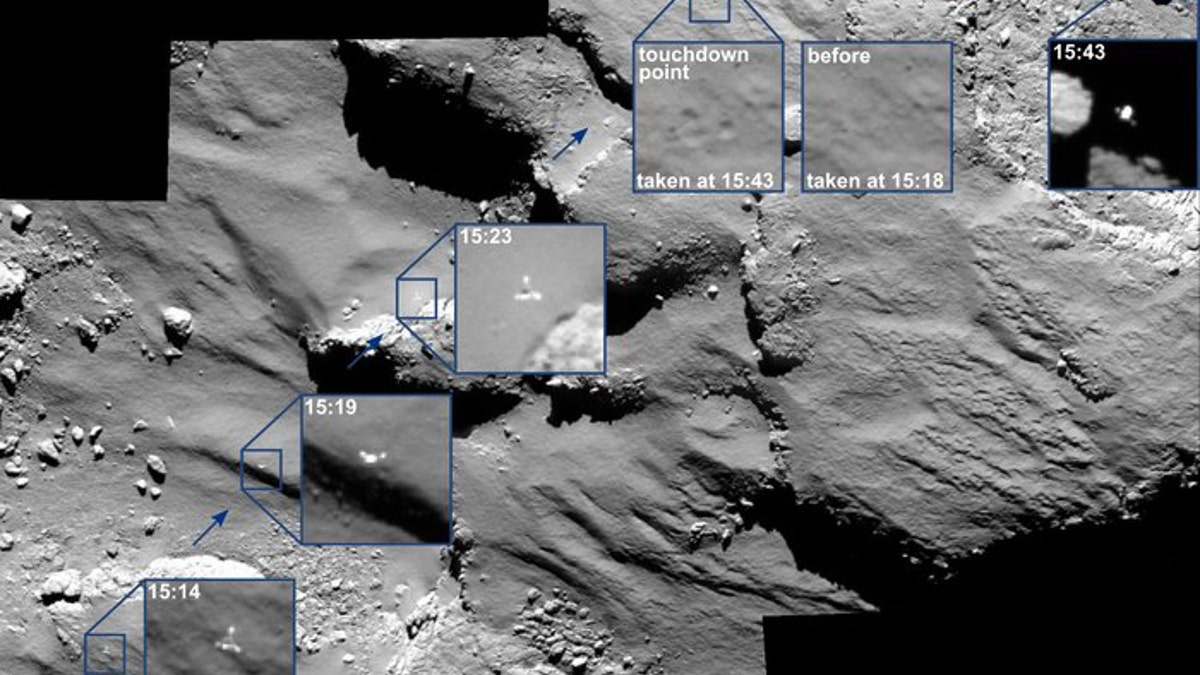
Images showing the Philae lander's journey as it approached and then rebounded from its first touchdown. (ESA/Rosetta/MPS for OSIRIS Team MPS/UPD/LAM/IAA/SSO/INTA/UPM/DASP/IDA)
The icy surface of comet 67P/Churyumov-Gerasimenko, home to the famous Philae lander, may also host alien life, according to astrobiologists.
Professor Chandra Wickramasinghe, director of the U.K.’s Buckingham Centre for Astrobiology, and Max Wallis of the University of Cardiff say that the comet could be home to living microbes. The scientists presented their research at the Royal Astronomical Society’s National Astronomy Meeting in Llandudno, Wales on Monday.
“The case we're building includes what's being discovered about comet CG's [Churyumov-Gerasimenko’s] surface layers -- mineral and carbonaceous dust forming a protective crust over a mix of complex carbon compounds and H2O,” explained Wallis, in an email to FoxNews.com. “[This] makes a positive habitat for micro-biology as the comet warms on nearing the sun.”
Wallis also cites the emission of gases from the comet last September before its “subcrust” had warmed as evidence of stored bio-gases being released.
Related: Philae probe reaches comet, makes space history
Philae made headlines in November 2014 when it became the first probe to land on a comet, the culmination of an audacious 10-year mission. But when the lander settled into the shadow of a cliff three days later its solar panels were deprived of sunlight and it entered into "idle mode.” Last month, however, the European Space Agency lander began “waking up," intermittently sending data to the Rosetta spacecraft orbiting the comet.
“Rosetta has already shown that the comet is not to be seen as a deep-frozen inactive body, but supports geological processes and could be more hospitable to micro-life than our Arctic and Antarctic regions,” said Wallis, in a statement released by the Royal Astronomical Society. The experts cite further evidence of life in Philae’s detection of complex organic molecules on the comet’s surface and in infrared images taken by Rosetta.
According to the scientists’ research, the comet’s micro-organisms probably require liquid water bodies to colonize the comet and could inhabit cracks in its ice and “snow.”
The comet, which is travelling at more than 73,000 mph, is currently about 176.7 million miles from Earth, according to Sky News.
Follow James Rogers on Twitter @jamesjrogers



















